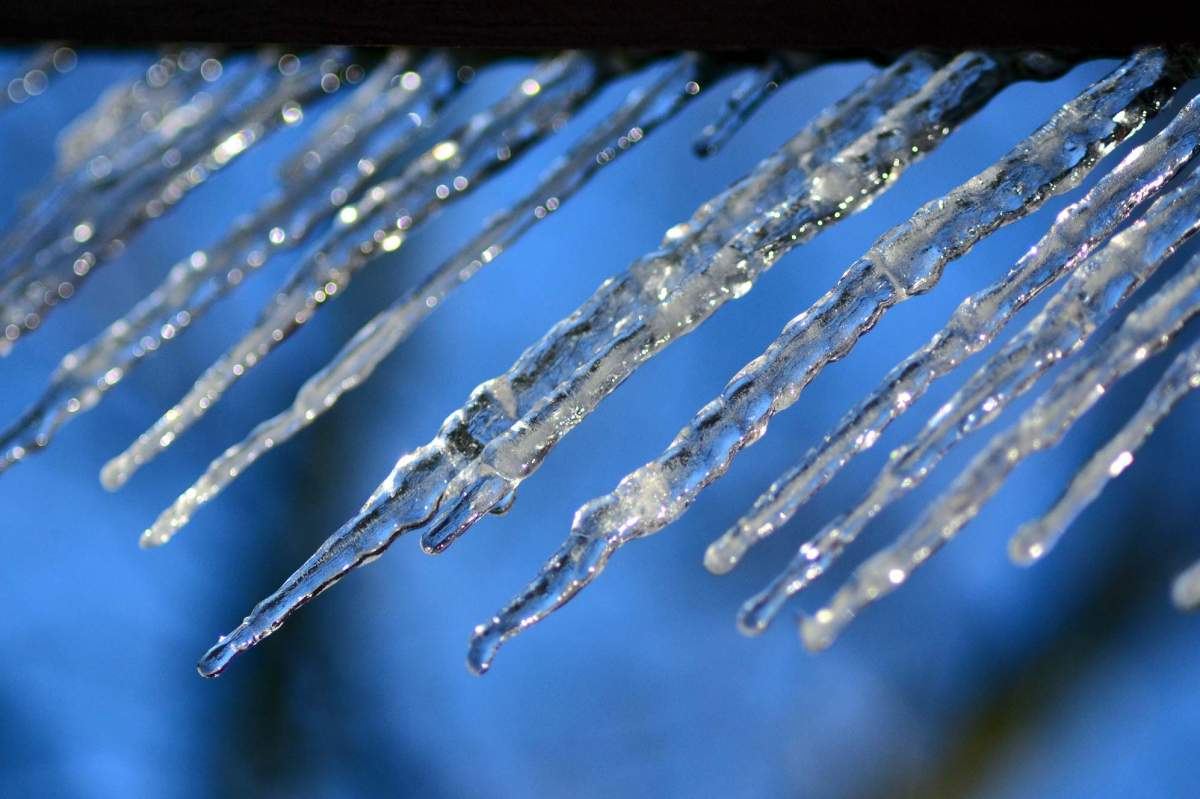
Think about it. Gradeschool children may draw icicles as two straight lines converging at a point, but in nature they don't look that way. They are bumpy, lumpy, and clumpy. But an icicle is just frozen water. So what gives?
 How To Grow An Icicle
The answer is surprisingly simple. Though you may have noticed that icicle when it was two feet long, it didn't begin that way. It started as a short icicle and gradually grew longer. Icicles extend by having liquid water--say, from melting snow above them--run down over their surfaces and drip slowly off their ends. Some of this gradually dripping water freezes as it slides down the surface of the icicle, making it thicker.
Icicle Cycle
Now here's the science-y part: increased surface area means more room for heat to escape. Let's say a mini-icicle is just slightly larger on one side than the other. You might not even be able to see the difference, but that very-slightly greater surface area on one side means heat escapes ever so slightly more over there, which means a little more dripping water freezes over there. That means the bulge gets just slightly larger, which means even more surface area, which means...
See what's happening? As soon as a minute bump appears on a forming icicle, the relationship between surface area and heat loss will cause that bump to grow. The bigger the bump becomes, the more its tendency to swell.
The result? Full-length icicles are bumpy, lumpy, not smooth but clumpy.
Read More:
"Icicle Waves Go With the Flow" (Science News)









